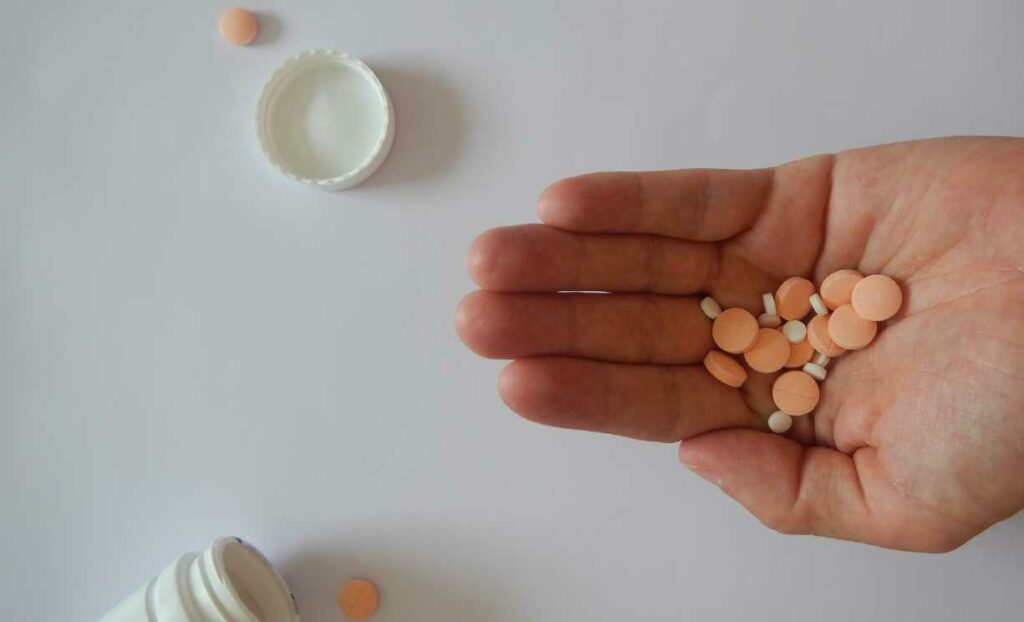Polycystic Ovarian Syndrome (PCOS) is a common hormonal disorder that affects individuals with ovaries, often leading to irregular periods, ovarian cysts, and hormonal imbalances. Among the various treatment options, Diane-35, a combination oral contraceptive, has gained attention for its potential effectiveness in managing PCOS symptoms. In this blog, we will delve into the specifics of Diane-35 as a treatment for PCOS, exploring its mechanism of action, potential benefits, and considerations for those considering this hormonal therapy.
Contents
Understanding PCOS And Its Symptoms
Polycystic Ovarian Syndrome (PCOS) is a common hormonal disorder that affects individuals with ovaries. It is characterized by various hormonal imbalances that can lead to a range of symptoms. Understanding PCOS and its symptoms is crucial for early detection and effective management. Here are some key aspects:
- Irregular Menstrual Cycles: One of the hallmark signs of PCOS is irregular menstrual cycles. Individuals with PCOS may experience infrequent periods, prolonged menstrual bleeding, or unpredictable cycles.
- Ovulatory Dysfunction: PCOS often involves disturbances in ovulation, the process where the ovaries release eggs. Anovulation (lack of ovulation) or irregular ovulation can contribute to fertility issues.
- Androgen Excess: Elevated levels of androgens, often referred to as male hormones, are common in PCOS. This can lead to symptoms such as acne, oily skin, and hirsutism (excessive hair growth, especially on the face and body).
- Ovarian Cysts: The name “polycystic” refers to the presence of small cysts on the ovaries. While these cysts are not harmful, their presence is a characteristic feature of PCOS.
- Insulin Resistance: Many individuals with PCOS also experience insulin resistance, where the body’s cells do not respond effectively to insulin. This can also lead to high insulin levels and an increased risk of type 2 diabetes.
- Weight Gain and Difficulty Losing Weight: Weight-related issues are common in PCOS. Many individuals with PCOS struggle with weight gain, and losing weight can be challenging due to the metabolic effects of insulin resistance.
- Skin Issues: Skin problems, including acne and skin tags, are frequent manifestations of PCOS. These issues are often related to hormonal imbalances, particularly elevated androgens.
- Hair Thinning: In addition to excessive hair growth (hirsutism), some individuals with PCOS may experience thinning of the hair on the scalp, a condition known as female pattern hair loss.
What Is Diane-35 and How Does It Work?
Diane-35 is a medication designed to address certain hormonal issues in the body, primarily related to the regulation of female sex hormones. It contains two key components: ethinylestradiol, a synthetic form of estrogen, and cyproterone acetate, an anti-androgen. Diane-35 works by influencing the hormonal balance in the body, particularly targeting the hormones involved in the menstrual cycle and those associated with male characteristics.
Ethinylestradiol, the synthetic estrogen, helps regulate the menstrual cycle by suppressing ovulation. Ovulation is the process where the ovaries release eggs, and by inhibiting this process, Diane-35 contributes to the prevention of pregnancy and helps regulate periods.
Cyproterone acetate, the anti-androgen component, counteracts the effects of male hormones called androgens. This is particularly beneficial for conditions where elevated androgen levels contribute to issues such as hirsutism (excessive hair growth), acne, and oily skin. By blocking the impact of androgens, Diane-35 can improve these symptoms.
Diane-35 is not only used as a contraceptive but also prescribed in dermatology to address skin concerns associated with hormonal imbalances. It’s important to note that Diane-35 is typically prescribed under the guidance of healthcare professionals, considering individual health factors and potential side effects. The dual action of regulating menstrual cycles and mitigating symptoms related to androgen excess makes Diane-35 a versatile medication for those dealing with specific hormonal challenges.
Potential Benefits Of Diane-35 For PCOS
Diane-35, a combination oral contraceptive, is often prescribed for the treatment of symptoms associated with Polycystic Ovarian Syndrome (PCOS). Here are the potential benefits of Diane-35 for individuals with PCOS:
- Regulated Menstrual Cycles: Diane-35 helps regulate menstrual cycles, addressing the irregular periods commonly associated with PCOS. By stabilizing hormonal fluctuations, it promotes regular and predictable menstruation.
- Ovulation Suppression: The medication suppresses ovulation, preventing the release of eggs from the ovaries. This is particularly beneficial for individuals with PCOS who may experience irregular or absent ovulation.
- Reduced Androgenic Symptoms: PCOS often involves elevated levels of androgens (male hormones), leading to symptoms such as hirsutism (excessive hair growth), acne, and oily skin. The anti-androgenic properties of Diane-35, specifically cyproterone acetate, help mitigate these symptoms by counteracting the effects of androgens.
- Improved Acne Management: Diane-35 is effective in managing acne, a common skin issue associated with hormonal imbalances in PCOS. The combination of ethinylestradiol and cyproterone acetate addresses the underlying hormonal factors contributing to acne formation.
- Reduced Ovarian Cysts: By regulating ovulation and hormonal balance, Diane-35 may also contribute to a reduction in the formation of ovarian cysts. This can be significant for individuals with PCOS, where the presence of multiple cysts is a characteristic feature.
- Enhanced Contraceptive Benefits: In addition to managing PCOS symptoms, Diane-35 provides contraceptive benefits by preventing ovulation. This dual action makes it a suitable choice for individuals with PCOS who also desire contraception.
Individual health factors, potential side effects, and contraceptive needs should be taken into account when prescribing Diane-35 for PCOS management. Regular monitoring and follow-up with a healthcare provider are essential to ensure the optimal and safe use of the medication.
Side-Effects Of Diane-35
Diane-35, like any medication, may be associated with certain side effects. It’s crucial for individuals using this oral contraceptive to be aware of potential adverse reactions and to consult with healthcare professionals if any concerns arise. Common side effects of Diane-35 may include:
- Nausea and Vomiting: Nausea and vomiting can occur, especially when initiating the use of Diane-35. Taking the pill with a meal or before bedtime can help alleviate these symptoms. If the nausea persists, consulting with a healthcare professional is advisable.
- Breast Tenderness: Hormonal changes from the contraceptive can lead to breast tenderness or enlargement. While these effects are typically temporary, individuals experiencing persistent discomfort should seek guidance from their healthcare provider.
- Headaches: Headaches are a potential side effect, and individuals should be vigilant if they experience persistent or severe headaches.
- Changes in Mood: Hormonal fluctuations can influence mood, causing changes such as mood swings or feelings of anxiety or depression.
- Changes in Sexual Desire: Some individuals may notice changes in libido as a result of hormonal contraceptives. Open communication with a healthcare professional can help address any concerns or adjustments needed.
- Weight Changes: While weight changes are not universal, some individuals may experience slight fluctuations. It’s important to note that individual responses to hormonal contraceptives can vary, and persistent or significant changes should be discussed with a healthcare provider.
- Menstrual Irregularities: Initially, individuals may experience changes in menstrual bleeding patterns, such as spotting or breakthrough bleeding.
- Skin Changes: Diane-35 is known for improving acne, but some individuals may experience changes in skin pigmentation or melasma. Monitoring skin changes and discussing them with a dermatologist can help.
- Increased Blood Pressure: Regular monitoring of blood pressure is recommended while on Diane-35, as hormonal contraceptives can contribute to slight increases in blood pressure.
Conclusion
In conclusion, Diane-35 emerges as a multifaceted and valuable treatment option for individuals navigating the challenges of Polycystic Ovarian Syndrome (PCOS). This combination oral contraceptive, comprising ethinylestradiol and cyproterone acetate, showcases dual benefits in regulating menstrual cycles and addressing symptoms associated with androgen excess. By suppressing ovulation and counteracting the effects of elevated androgens, Diane-35 contributes to more predictable menstruation, reduced hirsutism, improved acne management, and potential relief from other PCOS-related concerns.
In the journey to manage PCOS, Diane-35 stands as a versatile tool, addressing both the reproductive and dermatological aspects of the syndrome. By fostering a partnership between individuals and their healthcare providers, Diane-35 can play a significant role in enhancing the quality of life for those dealing with the complexities of PCOS.





